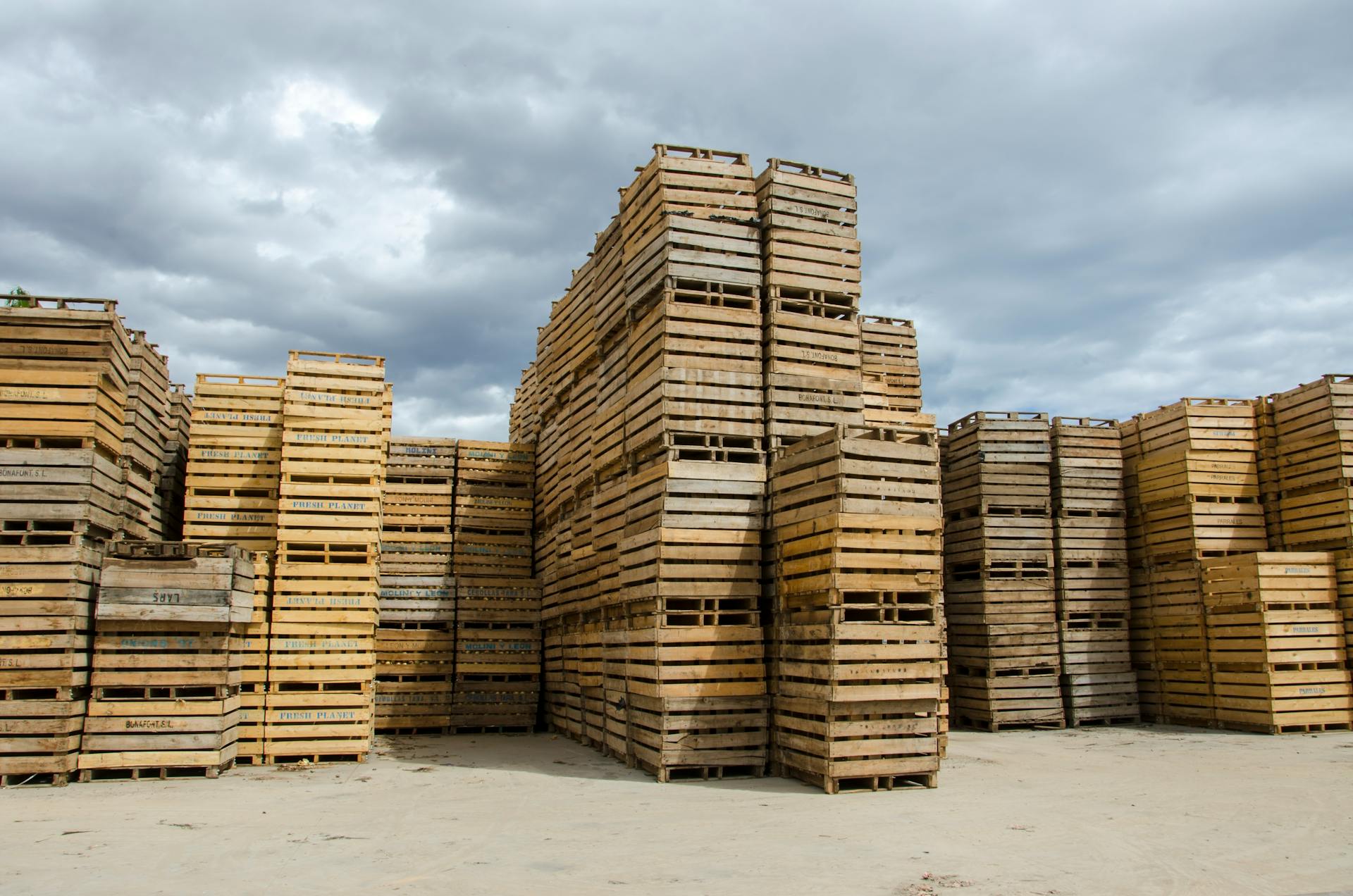Wooden Shipping Crates: Sustainable Solutions For Businesses
The global marketplace provides consumers with unmatched access to better products at more affordable prices. But it impacts businesses and the environment in many ways. International shipping often requires higher spending, logistical resources, and carbon emissions.
For many companies, finding reliable packaging and efficient shipping solutions is like finding a needle in a haystack. However, wooden shipping crates emerged as time-tested solutions that continue to prove their worth. These versatile, cost-effective, and eco-friendly containers work perfectly for small companies sending delicate items domestically or large corporations managing international shipments.
Environmental Edge
The growing focus on environmental responsibility has put traditional shipping practices under scrutiny. According to estimates, the supply chains operated by the world’s four largest companies are responsible for 80% of 4.3 Gigaton of carbon gases emitted annually—producing more pollutants than those generated directly and indirectly by other businesses. Initiatives are ongoing to correct this, though.
Choosing wooden crates for your shipping needs will align your business with sustainable practices. Natural wood is a renewable source that leaves a smaller carbon footprint than its plastic or metal counterparts. They can also be easily repaired, reused, or repurposed at the end of their life cycle.
Customization Options
The good thing about custom crates is that they’re flexible enough to accommodate items of various shapes, sizes, and weights. Your packaging partner can create solutions that account for the following:
- Specific product dimensions and weight distribution: Crafting transport and shipping crates that fit custom dimensions eliminates excess space and movement, reducing the risk of damage throughout the supply chain.
- Special handling requirements during loading and unloading: Manufacturers can incorporate special features like removable panels or built-in ramps to facilitate safe loading and unloading operations.
- Climate control needs during transit: Temperature fluctuations and humidity can negatively affect sensitive equipment or materials. Custom crates typically have protective coatings and ventilation systems to better manage these environmental changes.
- Additional protection against rough handling or harsh elements: A wooden crate with reinforced corners and impact-resistant capabilities provides extra protection during transport. Additionally, shock-absorbing materials and strategic bracing can better protect vulnerable areas.
Safe Pack understands the importance of protecting valuable cargo while maintaining cost-effectiveness and reliability. If you’re seeking standard or tailored protection, you can always explore our products to find what you need. You can also ask us for assistance in customizing your packaging solutions.
Packaging Versatility
The global logistics industry will likely grow more than twice its value in the next few years. According to recent figures, the market will balloon to USD$ 570.9 billion (CAD$ 820.6 billion) by 2030 from USD$ 261.5 billion (CAD$ 375.8 billion) in 2022.
Wooden crates will play a huge role in this growth. That’s because they’re versatile across different shipping scenarios. They’re at home inside sea containers as they are on local delivery trucks. Apart from shipping, you can use them to store equipment safely.
When properly constructed, they can withstand:
Temperature Fluctuations
Wood’s natural insulating properties help maintain stable internal conditions. The material’s cellular structure acts as a buffer against extreme temperature changes to protect sensitive contents. Its moisture-regulating properties also help prevent condensation buildup. As such, they protect metal components from corrosion and safeguard electronic equipment from moisture damage.
Pressure From Stacking
Wooden crates have structural integrity that allows for safe vertical stacking—a common practice to maximize shipping space. Their robust construction distributes weight evenly, preventing collapse and damage to the contents below.
Multiple Loading and Unloading Cycles
Products for shipping undergo multiple loading and unloading cycles. It’s a good thing that wooden shipping crates have sturdy bases and corners that ensure durability despite multiple handling procedures. Reinforced joints and high-quality materials likewise help extend their operational life.
Their ability to adapt means you don’t need to switch to different packaging containers as your business grows or your shipping routes evolve.

Cost-Effectiveness
The average spending for packaging varies wildly depending on several factors. However, shipping rates have kept climbing in recent years. In the US, for instance, companies had to spend USD$ 10.6 (CAD$ 15.22) more for shipping electronics in 2023. Price increases push sellers to find cost-efficient solutions to lower costs without sacrificing service quality.
Wooden crates may require higher initial costs compared to other alternatives, but they prove more economical in the long run. Their durability, for example, means you can reuse them multiple times. As such, you pay lower packaging costs per shipment. Their robust construction likewise results in lower damage rates during transit.
Apart from cost savings, you also get the following additional benefits:
- Reduced lead time for custom orders: Modern manufacturing processes enable faster production cycles. This means you can meet urgent shipping deadlines without compromising on quality.
- Lower repair and maintenance costs: Basic carpentry skills are enough to repair or replace damaged parts. Wooden crates likewise don’t need specialized methods or tools for maintenance.
- Easier modification for changing needs: If you’ve mistakenly measured your products, your packaging solutions provider can visit on-site and rebuild the crate, saving you time, money, and effort.
- Better retention value for reusable crates: High-quality wooden crates retain their integrity for several years. Plus, they don’t depreciate fast. Investing in one assures you’re getting good value from your investment.
These practical advantages make wooden crates a financially sound choice for sustainable operations. Getting one means having a solution that addresses your short-term and long-term needs—without having to spend more.
Making the Right Decision
Your shipping strategy should focus on protecting your products while maintaining efficiency in your supply chain. When choosing the right solution, consider the nature of your products and their specific protection requirements. Study your product vulnerabilities to determine the most appropriate crate design.
You also need to evaluate your typical shipping routes and handling conditions. Shipping environments influence your decisions about protective coatings and treatment techniques.
Storage needs at both origin and destination likewise play a key role. Climate-controlled facilities may be necessary for sensitive items, while standard warehousing might suffice for robust products.
The Future of Sustainable Shipping
Wooden crates will play an increasingly important role as global logistics prioritize sustainable practices. These shipping solutions combine eco-friendliness, versatility, and practical advantages—making them an attractive choice for forward-thinking organizations.
Innovations in treatment and design might lead to some shifts, but the fundamental benefits of wood packaging remain constant. Using them addresses your immediate shipping challenges, and you’re also investing in a sustainable future for your business and the planet.





